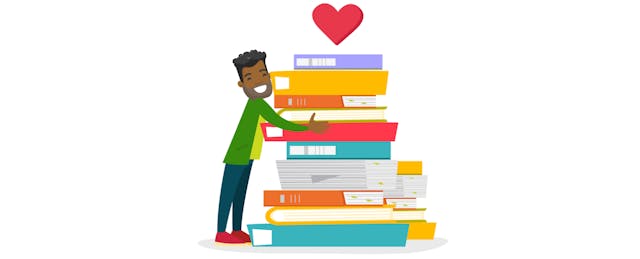To Sam Moulton, Director of Research for Panorama Education, a student failing a course is a wailing siren, signaling deep academic and personal challenges.
Moulton's work has centered on psychology, education and cognition. After more than a decade of researching, writing and presenting, one of the many things he's learned is that course failures are major events for students. He points to studies from organizations like the University of Chicago Consortium on School Research which found that one failed course in ninth grade reduces a student’s likelihood of graduating by 30 percent.
Research has shown that traditional variables like attendance and in-class behavior play a role in course failures. But in working at Panorama, Moulton discovered little research analyzing the relationship between course failures and students’ social-emotional learning (SEL).
Thanks to Panorama’s national dataset, Moulton had exactly the data he needed at his fingertips. He got to work analyzing the connection between SEL and course failures.
Moulton says, surprisingly, SEL variables weren’t just linked to course failures; they were among the top variables associated with failures. Here he shares the details of what he discovered and how schools can use these findings to reduce course failures. He also lays out Panorama’s vision for how focusing on SEL in schools can go beyond reducing course failures to help kids graduate and thrive in college or careers.
![Course Failure Metrics Course Failure Metrics [chart]](https://edsurge.imgix.net/uploads/photo/image/6623/sel-1551898266.png?w=216&h=216&auto=compress,format&fit=fill&bg=fff&pad=0&blur=10&px=4)
EdSurge: Tell us about your research; what data did you gather and how?
Sam Moulton: Panorama has a unique national dataset because our platform combines what are typically siloed data streams from student information systems, assessment platforms and behavior management systems with data from Panorama’s SEL surveys.
So with the consent of schools, we anonymized, aggregated and analyzed data from 192 schools, 26 districts and over 100,000 students. We were able to pull together students' demographic information, attendance, classroom behavior—and then add in social-emotional variables like grit, growth mindset and social awareness to ask, “What's most associated with course failures?”
The answer? While students’ performance on math and English Language Arts (ELA) assessments were most closely linked to failures, SEL variables were next in line. Students who report low levels of these SEL skills are more likely to fail courses.
How can schools use your findings going forward?
Begin to gather SEL data and integrate them with other data. There are many schools who don't yet measure social-emotional variables—they don't think there are good measures or feel that these don’t matter as much as other factors traditionally valued in education. This research speaks to the value of measuring SEL.
The other implication of this work is understanding that you can use SEL data to intervene, especially in conjunction with the academic data. You can use social-emotional data as part of a multi-tiered system of supports or response-to-intervention framework, to identify the kids who are most at risk of a serious event like a course failure. That measurement process is an opportunity to start a conversation with a student about the things going on in his or her life that extend beyond the classroom or the course material.
Give us an example; how can gathering and analyzing SEL data help reduce course failures?
Let’s look at Fresno Unified School District. They’re California’s fourth largest district, the forty-sixth largest in the nation. 88 percent of their 74,000 students live in poverty and face major daily struggles. To support all students, Fresno started focusing on social-emotional learning. As part of their efforts, they partnered with Panorama to develop a valid and reliable SEL measurement instrument and generate interactive reports. Now, educators feel empowered to find new ways to support students. And the district has maintained graduation rates over 80 percent, up to 82 percent for the 2016-2017 school year. Measuring and using SEL data played a major role in that success.
So you see, when schools gather SEL data, they are better able to find struggling kids before something dramatic like a course failure happens. Those kids who are struggling academically and social-emotionally can get support earlier. And educators will have a better understanding of what's going on with them.
Educators don't just see that certain students are missing school; they also see that these students feel like they don't belong at school. These students can be more closely monitored, and if they're not progressing, educators can rethink what they're doing and offer more or different support.
Along with preventing course failures, what are the broader implications of gathering SEL data in schools?
I think back to being bullied in sixth grade and how that affected me broadly, in class and outside of school. I think about people in my life who are struggling now or times when I've struggled. How different would those situations have been if, when we were growing up, we cared as much about how kids were doing socially and emotionally as we did about their test scores or their grades?
What if, from an early age, talking about emotions was part of school? What if schools did what they could to make sure every kid had a close relationship with an adult and felt like they belonged?
You can often see the seeds early on for a lot of the suffering that happens later in life. But schools are a wonderful opportunity to lay the groundwork for mental health and a thriving personal and professional life.



